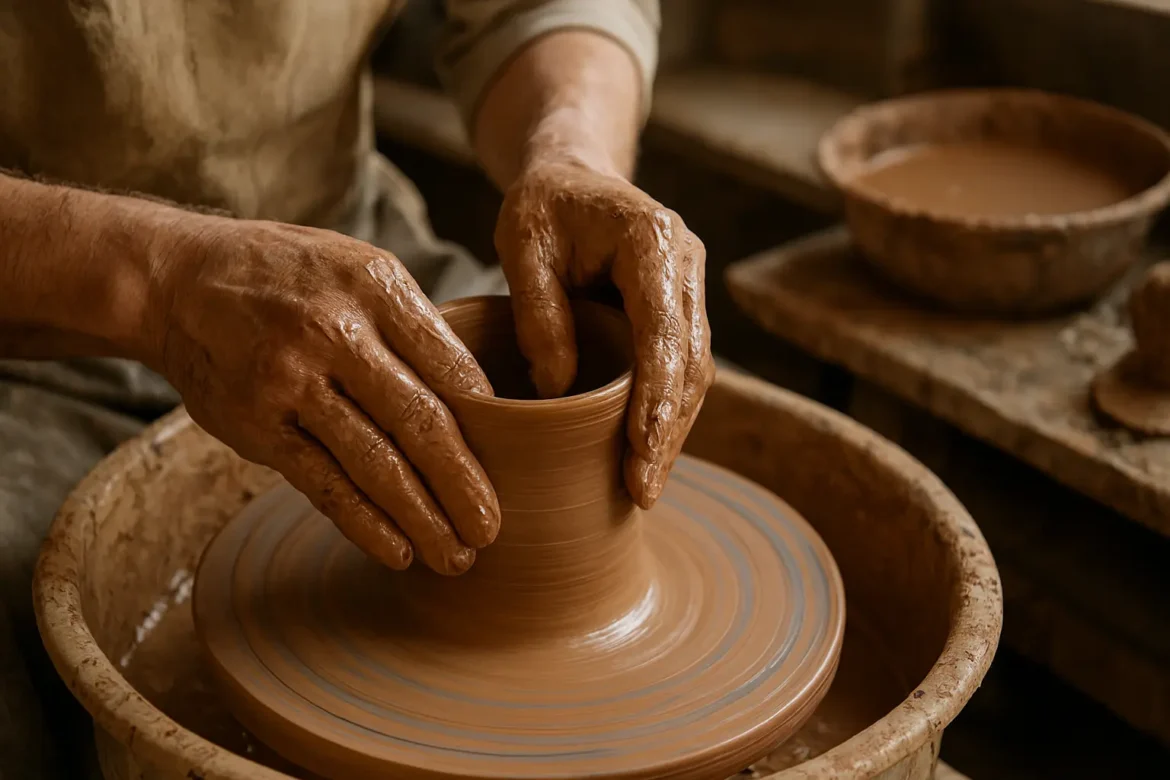Who Was the Prophet Jeremiah?
Jeremiah, son of Hilkiah, was one of the priests in Anathoth, a village located over 6 km northeast of Jerusalem, in the land of Benjamin. He was born and raised during the reign of the wicked King Manasseh, in a challenging context for faith. Even before his birth, God had chosen him to be a prophet, as written:
Before I formed thee in the belly I knew thee; and before thou camest forth out of the womb I sanctified thee, and I ordained thee a prophet unto the nations (Jeremiah 1:5, KJV).
Jeremiah began his prophetic ministry in the thirteenth year of the reign of the godly King Josiah, supporting his religious reforms. Known as the “weeping prophet,” he combined stern preaching with a sensitive and compassionate heart, reflecting his deep connection to the divine message.
The Lord called Jeremiah and gave him a specific instruction:
Arise, and go down to the potter’s house, and there I will cause thee to hear my words (Jeremiah 18:2, KJV).
God determined that Jeremiah should go to the potter’s house to receive a revelation by observing the potter’s work with the clay. This experience would serve as the foundation for a powerful spiritual lesson.
What Is a Potter?
A potter is an artisan who crafts and sells objects made of ceramic, working in a pottery, the place where items such as pots, tiles, dishes, and bricks are produced. The potter’s craft requires skill, patience, and precision, transforming raw clay into useful and beautiful objects.
The Process of the Vessel in the Pottery
The creation of a vessel begins with selecting the ideal clay. Geologists note that there are about 200 types of clay on the planet, but only eight are suitable for making vessels. After choosing the material, the potter sifts it to remove impurities like roots, leaves, stones, and twigs. Then, the clay lumps are broken down, moistened with water, trodden, and kneaded, forming a uniform paste.
This paste, made from different types of clay, water, and substances that ensure consistency, is covered with a tarp to remove air bubbles, increasing its strength and preventing cracks in the pieces. After resting, the potter places the paste on the wheel, often operated by foot. With skilled hands, the potter shapes the clay, forming a vessel in moments.
Without a fixed mold, each vessel is crafted individually, requiring technique and a keen eye to ensure uniformity. After shaping, the vessel is taken to a drying room, where it remains in a shaded, ventilated area until completely dry and sturdy. During this period, the potter adjusts the vessel’s position to prevent deformities caused by wind. Finally, the vessel is fired in a high-temperature kiln, where it takes its final form and becomes useful.
The Parable of the Potter and the Clay
The biblical study of the potter and the clay offers rich lessons about God’s work in our lives. He is the Potter who shapes our character and purpose. Our submission to Him largely determines what can be accomplished through us. God wants us to understand that, if necessary, He can adjust His plans for us, as shown in:
And the vessel that he made of clay was marred in the hand of the potter: so he made it again another vessel, as seemed good to the potter to make it (Jeremiah 18:4, KJV).
A lack of deep dedication to God can hinder His original purpose for our lives. Yet, He invites us daily into His presence, like a host opening the doors of His house. Jeremiah teaches us that no one enters the potter’s house without an invitation, and God calls us to be transformed in His hands.
In God’s pottery, we are like clay in the Potter’s hands. Sometimes, the vessel in formation breaks, as happens in our lives when the “cracks” of sin uch as adultery, impurity, envy, anger, or idolatry compromise our spiritual beauty and cause us to lose our anointing. In these moments, we must acknowledge our faults and cry out: “Against thee have I sinned, Lord; I need to be transformed and reshaped.”
When we enter the Potter’s house, we accept the invitation to transformation. God seals our cracks, restores our anointing, and makes us useful vessels for His work. The Christian life is marked by transformation and repair, like a hospital where we enter sick but leave healed.
Conclusion: A Daily Invitation to Transformation
God, the Potter, invites us to be shaped daily. Recognizing our flaws and allowing Him to transform us is the path to a restored and purposeful life. Like a vessel hardened in the kiln, we can emerge from the Potter’s house ready to fulfill the calling He has given us.


